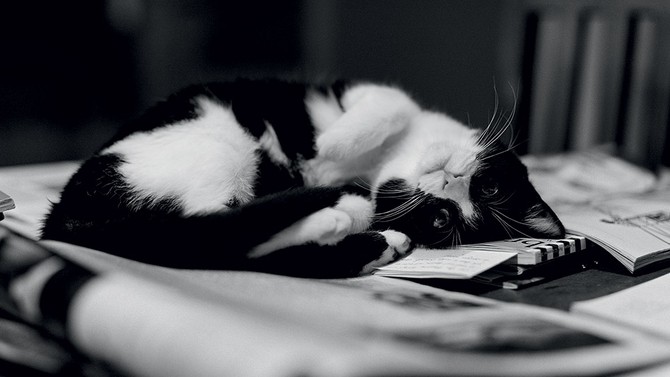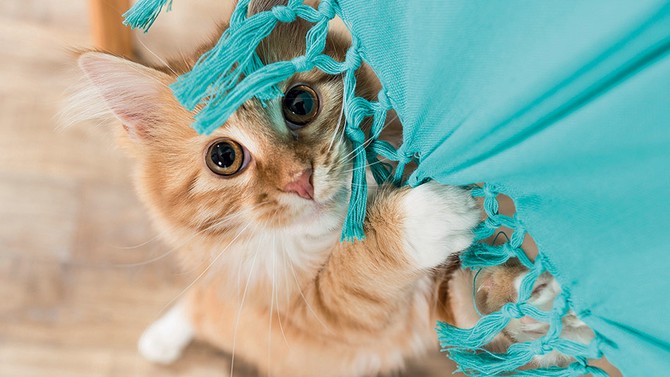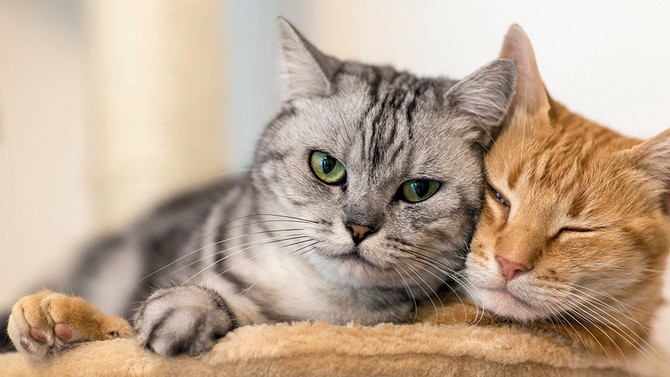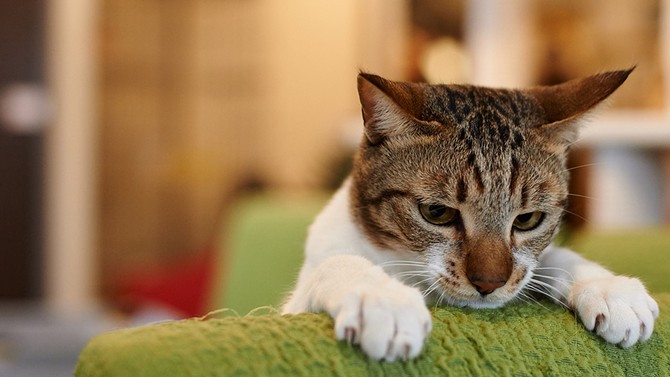There's a Wrong Way to Cuddle a Cat?
The most important points to note on the topic of cuddling, from Anna Cavelius' book For the Love of Cats.
By Anna Cavelius

Photo: © Oliver Giel
First: It is not you, but the cat who determines when she wants to be stroked.
Unambiguous signs may be rubbing your legs, but this can also mean that your cat is hungry or bored or that you should open the door because she doesn't feel like using the cat door. Other signs are rolling on her back and offering her furry tummy. However, be careful! Petting attempts in this place can lead to very painful consequences if your cat tries to show you her cat-and-mouse grip. Scolding is not allowed, since you are guilty for falling for this trick. Another sign may be lying on the table, newspaper, keyboard, or book, and giving a penetrating look. But this can also be a sign of boredom or of simply exercising the motto of a master: I can do it, therefore I am allowed to do it.

Photo: © Oliver Giel
Second: Never slap, pound on, or knead your cat.
The effect: the cat will disappear and won't have a very high opinion of you. In the worst case she will lay back her ears; then pull your fingers out of the way.

Photo: © Oliver Giel
Third: If you are a really good back rubber, rubbing rhythmically, gently, not too roughly or too softly...
...you will be rewarded with purring since you are a cat-cuddling master. Never stop petting as long as your cat doesn't want you to. She will give you a signal when it is enough by getting up, jumping off your lap or the keyboard, stretching, or biting your hand.

Photo: NEKOFighter/Flickr Flash/Getty Images
Incidentally: Having no time to cuddle with your cat is not acceptable.
Your cat will insist upon this form of devotion or will otherwise amuse herself with you in other ways: scratching the furniture, hopping up on the table when it is set, tearing up the newspaper you still want to read, using your calves as a scratching post, and so forth.

Reprinted from For the Love of Cats by Anna Cavelius. Copyright © 2016 by teNeues Publishing.

Reprinted from For the Love of Cats by Anna Cavelius. Copyright © 2016 by teNeues Publishing.
Published 05/31/2016

